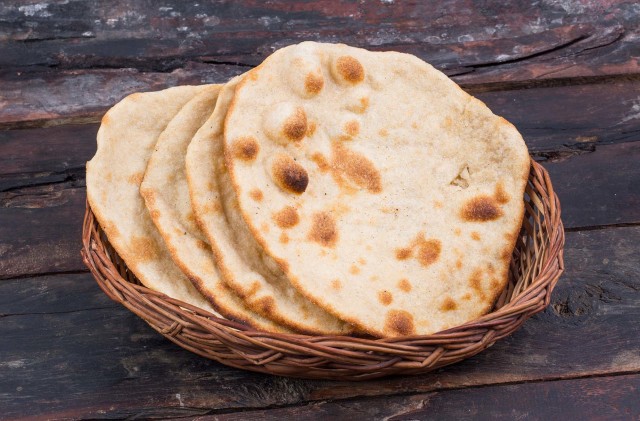Roti is a traditional flatbread from the Indian subcontinent. It is normally eaten with cooked vegetables or curries; it can be called a carrier for them. It is made most often from wheat flour, cooked on a flat or slightly concave iron griddle called a tawa. Traditionally, rotis have also been made from the flour of millet, maize, jowar and even rice. Tandoori roti is cooked by sticking the flattened dough to the inside wall of a tandoor oven, where it bakes quickly at a high temperature.. Chapatis are made of whole-wheat flour known as atta, mixed into dough with water, edible oil and optional salt in a mixing utensil called a parat, and is cooked on a tava (flat skillet). It is known as phulka in Punjabi and Saraiki, and maani in Sindhi.
In Sri Lanka, there is a variant of roti called pol roti made of wheat flour, and/or kurakkan flour, and scraped coconut. Sometimes, chopped green chilis and onion are added to the mixture before cooking. These are usually thicker and harder than other roti types. They are usually eaten with curries, or some types of sambol or lunu miris and considered a main meal rather than a supplement.
Another variety of roti popular in Sri Lanka is kottu roti, which is made up of paratha or godamba roti, These are cut into small pieces, small in size and rectangular or square in shape. Then on a square heating pan, vegetables and onions are fried. Eggs, cooked meat, or fish are added to fried vegetables and heated for a few minutes. Finally, the pieces of cut paratha are added. These are chopped and mixed by repeated pounding using heavy iron blades/spatula, the sound of which can be heard from a long distance. Depending upon what ingredients are used, the variations are vegetable, egg, chicken, beef, mutton, and fish kottu roti. It is sometimes prepared and served as a fast food dish.

